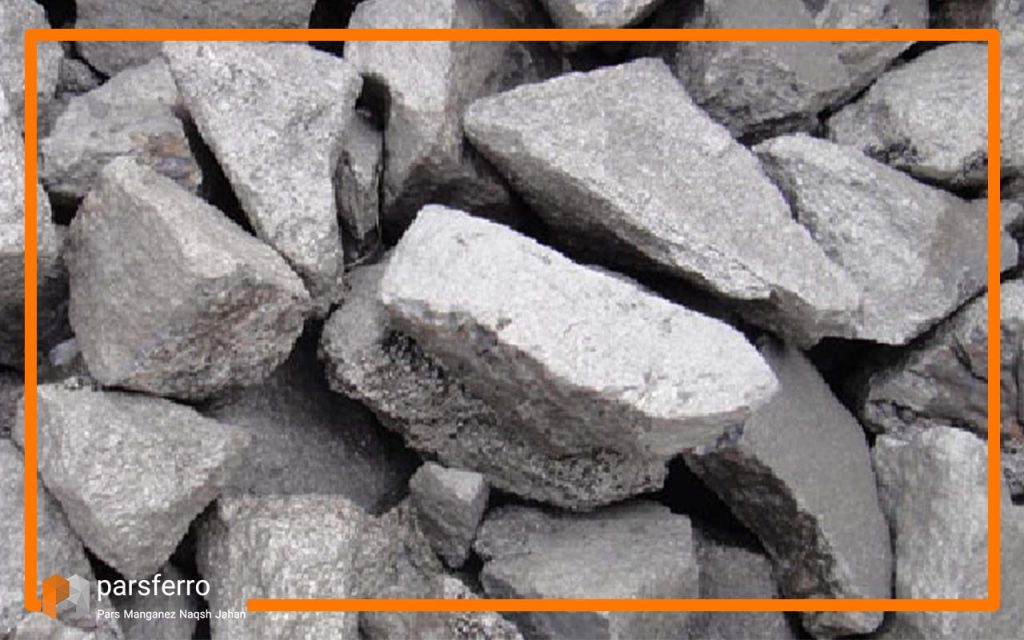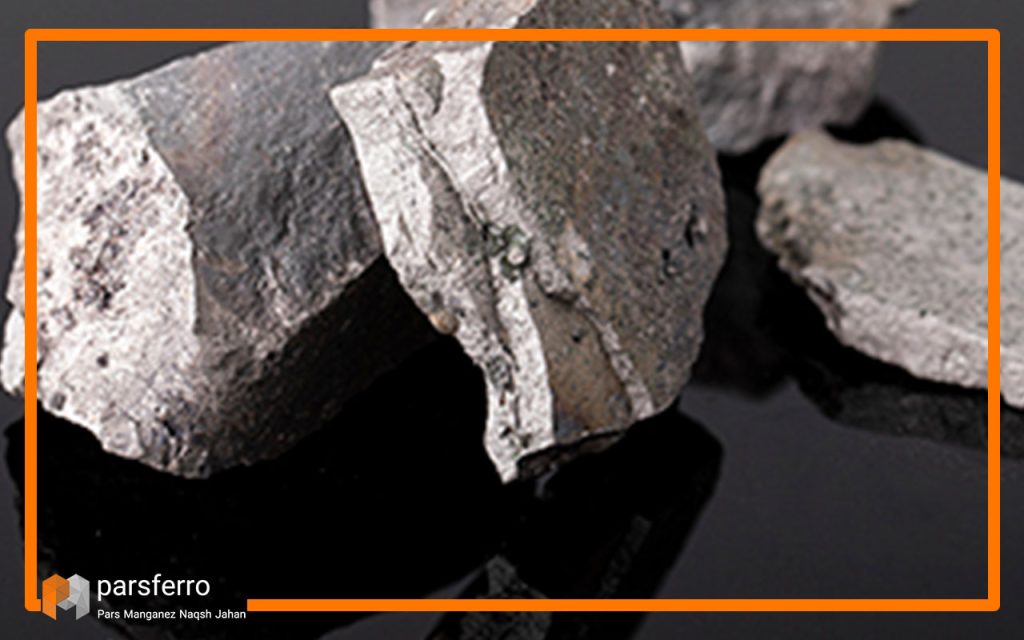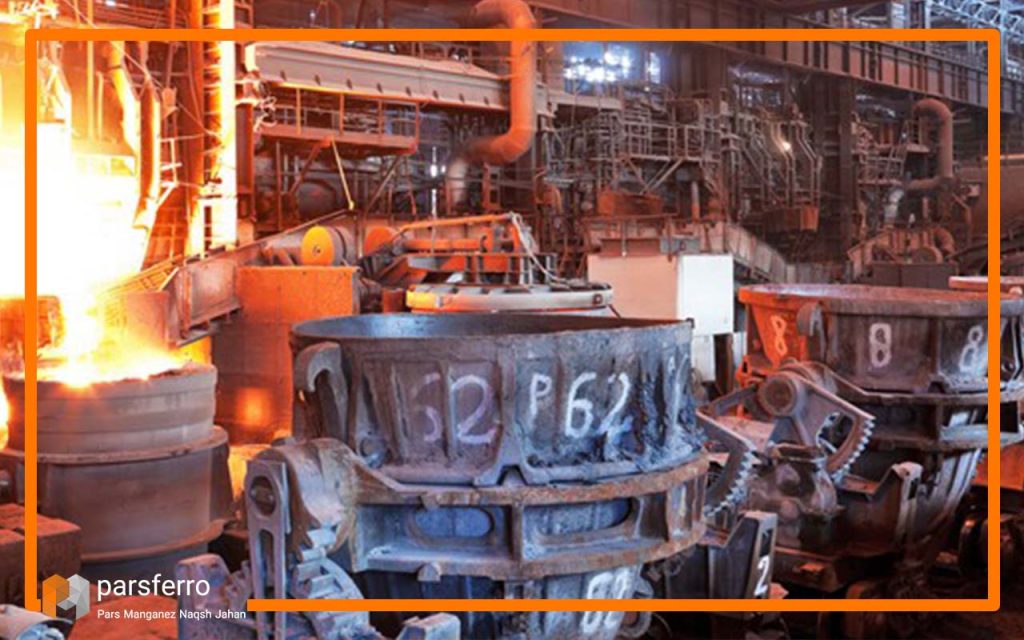Silico manganese is an alloy composed of silicon, manganese, carbon and other elements like sulfur, phosphorus, aluminium, etc. The exact silico manganese composition can vary among different grades of silico manganese based on the intended application and specific alloying requirements. For this reason in this article, we highlight everything related to silico manganese composition including its elements content and grades.
Pars Manganez Naqsh Jahan Company is one of the top companies in the field of producing ferroalloys, including silico manganese, ferro silicon, etc., to provide raw materials for steelmaking. Due to the high quality and high purity of the products we produce, our group is known as one of the top producers that can send all its ferroalloys worldwide. For more information, you can contact us via email.
What is silico manganese’s chemical composition?
The silico manganese composition can vary, but it typically contains the following elements:
- Silicon (Si): Silicon is a key component of silico manganese composition and is present in significant amounts. Silicon improves the strength and hardness of the alloy.
- Manganese (Mn): Manganese is another essential element in silico manganese composition. It enhances the strength, toughness, and hardenability of the alloy.
- Carbon (C): Carbon is usually present in small amounts. It contributes to the overall strength and hardness of the alloy.
- Other Elements: Depending on the specific requirements and the manufacturing process, silico manganese composition may contain trace amounts of other elements such as aluminum, phosphorus, sulfur, and others. These trace elements can have varying effects on the properties of the alloy.

the typical range for silicon manganese composition are as follows:
- Silicon (Si): 14% to 30%
- Manganese (Mn): 60% to 75%
- Carbon (C): 1.5% to 2.5%
- Phosphorus: 0.25% max
- Sulfur: 0.05% max
read more: what is silico manganese?
Silicomanganese grades in industry
The grade of silico manganese refers to the specific composition of the alloy, with variations in the percentage of manganese, silicon, and other elements. Different grades are designed for specific applications to meet the desired properties in steel production. Common grades of silico manganese include:
- Standard Grade (60-14)
– Manganese (Mn): around 60%
– Silicon (Si): around 14%
- High Carbon Grade (65-17, 68-16)
– Manganese (Mn): 65-68%
– Silicon (Si): 16-17%
– Carbon (C): Higher carbon content compared to standard grades
- Low Carbon Grade (60-10, 55-10)
– Manganese (Mn): 55-60%
– Silicon (Si): 9-10%
– Carbon (C): Lower carbon content compared to standard grades
- Medium Carbon Grade (65-15, 70-15)
– Manganese (Mn): 65-70%
– Silicon (Si): 14-15%
– Carbon (C): Medium carbon content
It’s important to note that these grades may vary slightly depending on the manufacturer and specific production processes. The choice of silico manganese grade depends on the requirements of the steel being produced, such as strength, hardness, and other mechanical properties. Additionally, the cost and availability of raw materials can influence the selection of a particular grade.

Silico manganese 60/14 the most common grade
The 60-14 grade strikes a balance between manganese(60) and silicon(14) content. Manganese contributes to the strength and hardenability of steel, while silicon deoxidizes and helps in the removal of impurities during the steelmaking process. This grade is versatile and can be used in various steel applications. It provides good mechanical properties, making it suitable for a range of steel products.
The silico manganese composition of 60-14 is often cost-effective, making it a preferred choice for many applications. The balance between alloying elements allows for the production of high-quality steel without excessive costs associated with more specialized alloys. The following table shows the physical properties of silico-manganese 60/14.
table1. Physical properties silicomanganese
| Physical properties | value |
| color | metallic grey or silver color |
| Density | 6.1 gr/cm3 |
| Melting point | 1060 |
| packaging | Can vary and it depends on industrial requirement |
The role of silico manganese elmenets in steel production
Silico manganese is an alloy used in steel production, and each of its primary components plays a specific role in influencing the properties of the steel produced. Here’s a breakdown of the role of each element in silico manganese:
- Silicon (Si): Silicon is a deoxidizing agent, meaning it helps to remove oxygen during the steelmaking process. It increases the strength of steel and imparts desirable electrical and magnetic properties. Silicon also improves the hardenability of steel.
- Manganese (Mn): Manganese is a deoxidizer as well, aiding in the removal of oxygen and sulfur from the steel. It enhances the strength, toughness, and hardenability of steel. Manganese also contributes to the formation of fine-grained structures in the steel, which is beneficial for certain applications.
- Carbon (C): Carbon is a crucial element for the hardening of steel through heat treatment processes like quenching and tempering. It influences the hardness, strength, and other mechanical properties of the steel.
- Sulfur (S) and Phosphorus (P): Sulfur and phosphorus are considered impurities in steel and are generally kept as low as possible. Excessive sulfur can cause hot brittleness, and both sulfur and phosphorus can adversely affect the steel’s mechanical properties. Control of these elements is important to ensure the desired quality and performance of the steel.

Silico manganese application
Here are some application of silico manganese:
Steel Production
Silico manganese is primarily used as a deoxidizing agent and alloying element in the production of steel. It helps remove oxygen from the steel, which improves the overall quality and strength of the final product.
Alloy Production
Silico manganese is used in the production of various alloys. The addition of silicon and manganese enhances the properties of the alloy, such as hardness, strength, and resistance to corrosion.
Foundry Industry
It finds application in the foundry industry for the production of cast iron. Silico manganese helps control the sulfur content in cast iron and improves its mechanical properties.
Welding Consumables
Silico manganese is used in the manufacturing of welding consumables. It contributes to the strength and quality of welds, making them more durable and resistant to corrosion.
Chemical Industry
Some chemical processes use silico manganese as a reducing agent or catalyst. It can play a role in certain chemical reactions and processes.
Non-Ferrous Alloys
It can also be used in the production of certain non-ferrous alloys, although its primary application is in the ferrous metallurgy.
read more: silico manganese uses
Conclusion
In summary, silico manganese is designed to introduce silicon and manganese into the steel melt during the steelmaking process, enhancing its deoxidizing properties and providing specific alloying elements that improve the steel’s strength, toughness, and other mechanical properties. The other elements in silico manganese composition, such as carbon, are essential for controlling the steel’s hardness and other characteristics, while sulfur and phosphorus levels need to be carefully managed to maintain the quality of the steel.


No comment